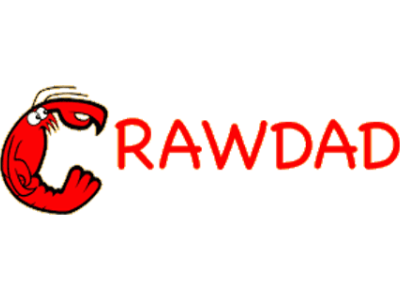CRAWDAD ufrj/london-trajectories

- Citation Author(s):
-
Leonardo Solé RodriguesMatteo SammarcoMarcin DetynieckiMiguel Elias M. Campista
- Submitted by:
- CRAWDAD Team
- Last updated:
- DOI:
- 10.15783/ejej-de94
- Data Format:
 1598 views
1598 views
- Categories:
Abstract
600 sets of routes from different origin/destination pairs from London
This dataset contains 600 sets of routes from different origin/destination pairs. Each route has information about trip duration, route length, traffic, criminality, accidents, nature and tourist attractions nearby. The routes were calculated by HERE Maps, along with duration estimates, criminality and accidents were acquired from the UK Government open data website, and nature and tourist attractions were downloaded from OpenStreetMap.
This dataset was used to research alternative route classification methods, that evaluates different metrics besides the usual time and length parameters, like criminality, accidents, nature and attractions.
institution :
ufrjversion :
2021-03-22external url :
https://github.com/leosole/LondonTrajectoriesTraceset
trajectoriesgps
- files: LondonTrajectoriesDataset.zip
- description: 600 route sets of different origin/destination pairs from London.
- tech description: This dataset contains 600 route sets of different origin/destination pairs from London, each with information about trip duration, route length, traffic, criminality, accidents, nature and tourist attractions nearby.
- collection method: The traces a GPS routes calculated by the HERE Maps API. These routes were provided with length and duration already. We estimated a visible area taking into account the route segments and a margin of 100 m for the left and right side for some of the features calculations. The nature feature was calculated intersecting the natural area polygons given by OpenStreetMap and the visible area. The attractions feature was calculated as the number of tourist attractions given by OpenStreetMap inside the route's visible area. The criminality was calculated as the sum of the severity of the crimes, provided by the UK police crime dataset, found inside the visible area. The severity of the crimes were weighted by the UK Office for National Statistics Crime Severity Score. The normalization of the features was done relatively to the maximum feature variation found in each route set (routes with the same origin and destination). The accidents feature was calculated as the sum of accidents severity and accidents casualties that happened in the route. The accidents data was provided by the UK Government Open Data Website. The traffic feature was calculated as the ratio between the no-traffic route duration and the route duration considering traffic. Both values are given by the HERE Maps API.
- incorrectly_meas_data: There is no incorrectly measured data.
- methodology limitations: The routes origins and destinations were randomized within the city of London, the data does not represent the city as a whole.
- missing data: There is no missing data.
- sanitization: The data didn't require any sanitization.
- dataname: trajectoriesgps
- version: 2021-03-22
- date/time of measurement start: 2020-12-01
- date/time of measurement end: 2020-12-15
trajectoriesgps Traces
- LondonTrajectoriesDataset.zip: undefined
- last modified: 2021-08-03
- dataname: LondonTrajectoriesDataset.zip
- url: /download/ufrj/london-trajectories/2021-03-22/london-traceset/LondonTrajectoriesDataset.zip
Instructions:
The files in this directory are a CRAWDAD dataset hosted by IEEE DataPort.
About CRAWDAD: the Community Resource for Archiving Wireless Data At Dartmouth is a data resource for the research community interested in wireless networks and mobile computing.
CRAWDAD was founded at Dartmouth College in 2004, led by Tristan Henderson, David Kotz, and Chris McDonald. CRAWDAD datasets are hosted by IEEE DataPort as of November 2022.
Note: Please use the Data in an ethical and responsible way with the aim of doing no harm to any person or entity for the benefit of society at large. Please respect the privacy of any human subjects whose wireless-network activity is captured by the Data and comply with all applicable laws, including without limitation such applicable laws pertaining to the protection of personal information, security of data, and data breaches. Please do not apply, adapt or develop algorithms for the extraction of the true identity of users and other information of a personal nature, which might constitute personally identifiable information or protected health information under any such applicable laws. Do not publish or otherwise disclose to any other person or entity any information that constitutes personally identifiable information or protected health information under any such applicable laws derived from the Data through manual or automated techniques.
Please acknowledge the source of the Data in any publications or presentations reporting use of this Data.
Citation:
Leonardo Solé Rodrigues, Matteo Sammarco, Marcin Detyniecki, Miguel Elias M. Campista, CRAWDAD dataset ufrj/london-trajectories (v. 2021-03-22), https://doi.org/10.15783/ejej-de94 , Mar 2021.
















